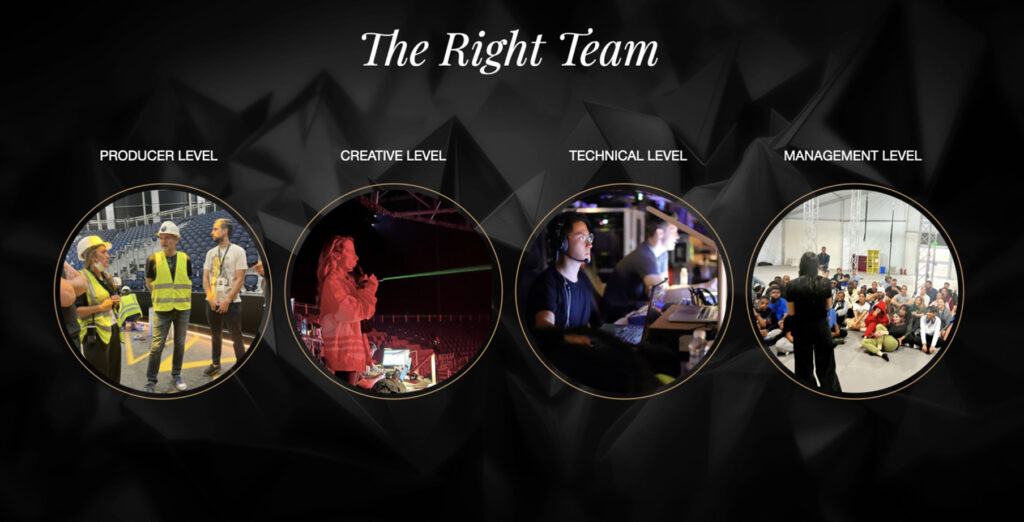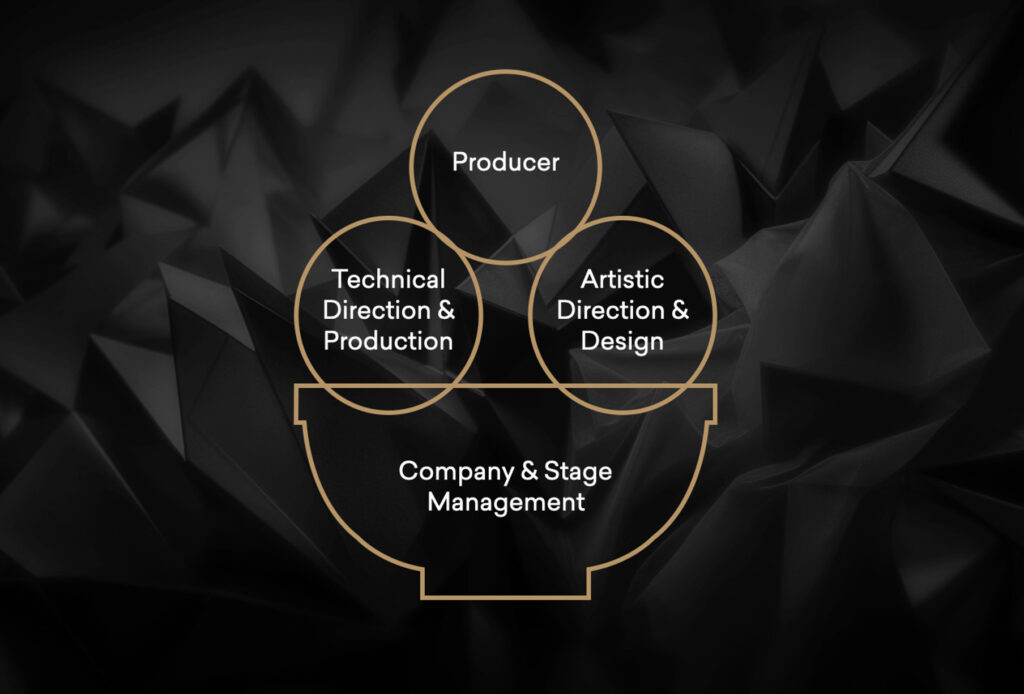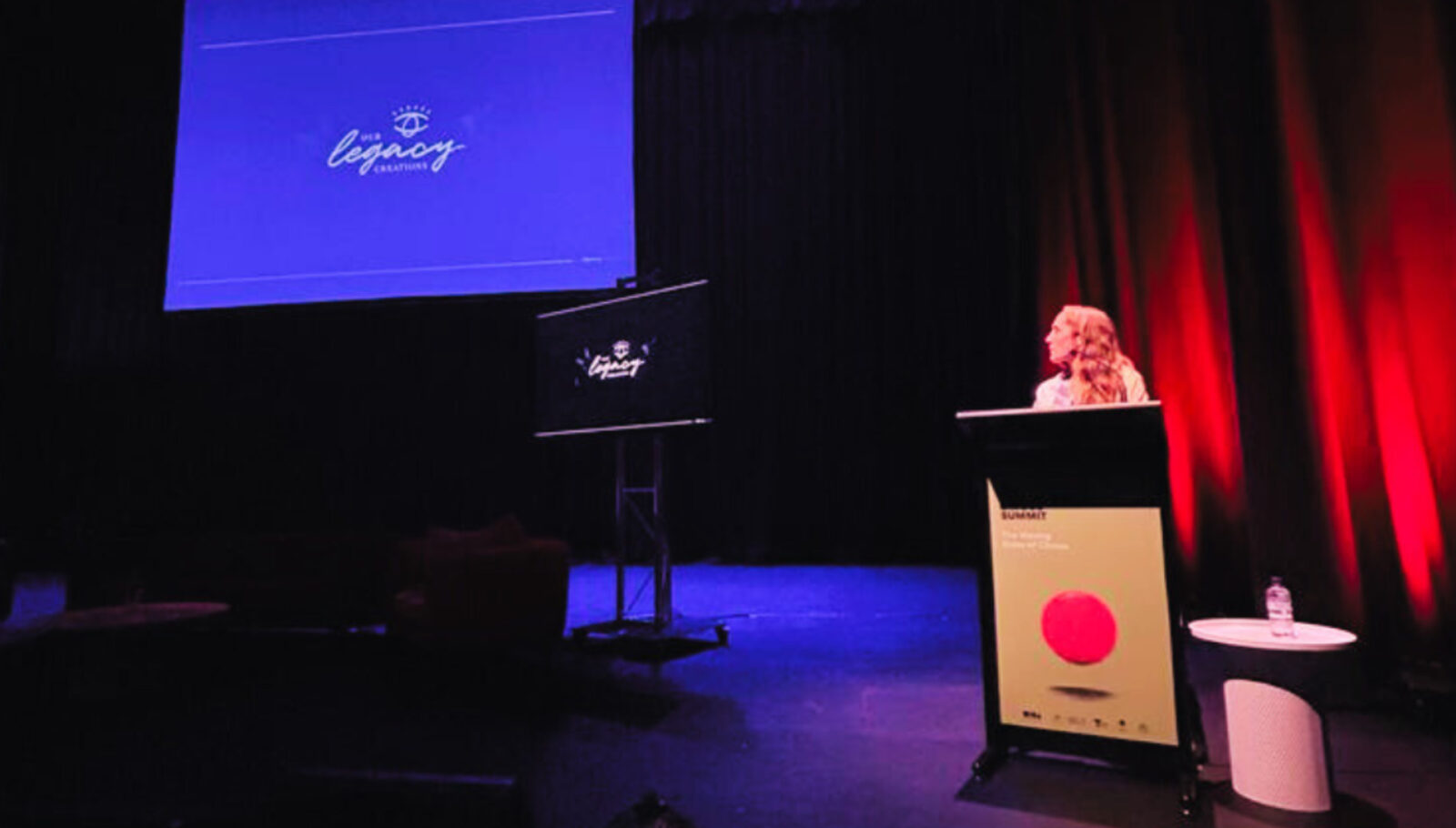From Dreams to Stage: Industry Veteran Anna Robb on the Three Essential Ingredients of a Great Production
Veteran producer and TheatreArtLife co-founder Anna Robb has more than two decades under her belt of bringing artistic visions to life onstage, helming production teams in six continents for everyone from the Dragone Entertainment Group to the Cirque to Soleil to The Sydney Opera House. She put that wealth of experience to good use as a keynote speaker at the 2023 Australian Circus Summit in Melbourne. This article is an excerpt from Anna’s speech that delves into the three essentials of making your dream show come true.
To make any vision come to life, you need the right team, the right time, and the right process. The success of these three factors will allow you to bring your concept to reality.

THE RIGHT TEAM
An idea without the team to deliver it is just that…an idea.
In whatever manner you enter a project, it is imperative to know and understand your lane. What you are capable of and what you are not capable of. Art is a collaborative process that demands diverse skill sets and roles coming together to produce a show. And no one is a master of them all.
To add to that complexity, there are no consistent definitions of job titles and roles in this industry. What a technical director may do on a musical in Australia may be completely different from what a technical director may do on a circus show in Europe: same job title, very different responsibilities.

In my career, I have been Stage Manager, Production Stage Manager, General Stage Manager, Production Artistic Co-ordinator, Producer, and Executive Producer. None of those job titles mean anything. What do I actually do? What I know is I am not the person to come up with a great show idea. But I’m the person you want next to the person with the idea. That is my lane, and I have stuck to this role regardless of my job title.
So, when seeking to compile the right team, it’s best to consider these layers, where you fit within them and who you need to surround yourself with to deliver a show..
Producer Level– Investors / business model / team / budget /client management – this person or team is going to deal with the business portion of the project
Creative Level – The team that creates the Vision for the show, designs the elements, builds the acts / scenes, and ensures that the artistic Vision of the project is realized.
Technical Level– The team that will ensure the project is realized from a tech perspective, addresses weight loadings, rigging requirements, automation needs, AV rental, installation, rigging, program, and operation of the show.
Management Level– The team that will manage the people and keep the project going according to schedule.
I am oversimplifying this, of course. But if you don’t know how to build out these layers of how many and who for the scale of the show you are trying to make, you are not ready to produce a show.
Often, as people start out, the idea for a show comes from the artistic person, so the project structure at an amateur level looks like this: artistic Vision supported by all the people that make it happen.

The artistic person looks to rally the people to make the Vision come alive and stumble their way through the producer, technical, and management roles.
In reality…. it needs to look a lot more like this:

More like an ice cream sundae than an ice cream cone. I cannot stress enough how key it is to your success to have the right people around you.
If you are an artistic person who doesn’t know how to build this team, the first person you need to team up with is someone who can.
The artistic team needs to be supported, guided, and given the space to create. Only someone not “IN” the process can create that environment. It is far too stressful to go from arguing about budgets into a creative space in one day…..and you should not put yourself in the position where you have to…
Every level of the production and its staffing is important, because at any point where there is a weakness, you are going to compromise the end product. The quality of the end product depends on the integrity of every step.
THE RIGHT TIME
The most effective producer is the one who can advocate for, defend, and protect the time for the creative process in front of those who don’t know what a creative process is.
It is tough to defend something so nebulous. When talking to people who understand money, they will understand parts of a production like a procurement process. You buy some lights, you ship some lights, you rig some lights, you program some lights, and, voila, you have a lighting design. But how long does it take to make a great circus act? You are going to be asked, why can’t you make a good circus act in six weeks instead of twelve?
Now a circus act, we can easily defend because you can always throw the gym analogy at your client. Ok, so you have decided to become a body builder… Do you do a three-month plan in four weeks? No, bodybuilding takes consistent effort over time to achieve results. The same for a circus act. But when you are talking about show scenes, or other nebulous parts of a show, you have to work hard to get people to understand what it takes to produce quality… (and by the way, more time does not necessarily equal success. Please see Point 1, the right team).
Time to create is everything.
Defend it. Defend it. Defend it.
THE RIGHT PROCESS

Our process is not the right process. It is a process. Your right process is what is unique to you and may set you apart in the industry. The important thing is to have a process. And then master it….
In any given project, we will go through the following steps:
- Preliminary Concept & Ideation
- Research & Development
- Final Concept
- Pre-Production & Production
- Training and Formation
- Theatre Integration
- Creation
- Dress Rehearsals/Public Feedback
Although I’ve been involved in creating some of the biggest circus-style shows in the world, as we enter new markets and new cultures, approach new clients, deal with ever-changing financial models, and work with new generations of artists and technicians—as we seek to understand and integrate new technologies and new creative possibilities—-I’m still practicing these foundations.
The beautiful thing about our industry is that there’s no end to the learning, no end to the growing. It is a joy because we love what we do but it’s also a responsibility because the world needs it, now more than ever as we compete with Netflix, Spotify, video games, AI, social media, and an inattentive and impatient world. We need to work hard to get people to stop and breathe and connect through art. Go practice.
...Do you have a story to share? Submit your news story, article or press release.




